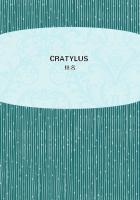The same pair of divinities appear now as father and daughter, now as brother and sister, now as husband and wife; and again they quite lose their personality, and are represented as mere natural phenomena. As Muller observes, "The poets of the Veda indulged freely in theogonic speculations without being frightened by any contradictions. They knew of Indra as the greatest of gods, they knew of Agni as the god of gods, they knew of Varuna as the ruler of all; but they were by no means startled at the idea that their Indra had a mother, or that their Agni [Latin ignis] was born like a babe from the friction of two fire-sticks, or that Varuna and his brother Mitra were nursed in the lap of Aditi."[103] Thus we have seen Bhaga, the daylight, represented as the offspring, of Aditi, the boundless Orient; but he had several brothers, and among them were Mitra, the sun, Varuna, the overarching firmament, and Vivasvat, the vivifying sun. Manifestly we have here but so many different names for what is at bottom one and the same conception. The common element which, in Dyaus and Varuna, in Bhaga and Indra, was made an object of worship, is the brightness, warmth, and life of day, as contrasted with the darkness, cold, and seeming death of the night-time. And this common element was personified in as many different ways as the unrestrained fancy of the ancient worshipper saw fit to devise.[104]
[103] Muller, Rig-Veda-Sanhita, I. 230.
[104] Compare the remarks of Breal, Hercule et Cacus, p. 13.
Thus we begin to see why a few ****** objects, like the sun, the sky, the dawn, and the night, should be represented in mythology by such a host of gods, goddesses, and heroes. For at one time the Sun is represented as the conqueror of hydras and dragons who hide away from men the golden treasures of light and warmth, and at another time he is represented as a weary voyager traversing the sky-sea amid many perils, with the steadfast purpose of returning to his western home and his twilight bride; hence the different conceptions of Herakles, Bellerophon, and Odysseus. Now he is represented as the son of the Dawn, and again, with equal propriety, as the son of the Night, and the fickle lover of the Dawn; hence we have, on the one hand, stories of a virgin mother who dies in giving birth to a hero, and, on the other hand, stories of a beautiful maiden who is forsaken and perhaps cruelly slain by her treacherous lover. Indeed, the Sun's adventures with so many dawn-maidens have given him quite a bad character, and the legends are numerous in which he appears as the prototype of Don Juan. Yet again his separation from the bride of his youth is described as due to no fault of his own, but to a resistless decree of fate, which hurries him away as Aineias was compelled to abandon Dido. Or, according to a third and equally plausible notion, he is a hero of ascetic virtues, and the dawn-maiden is a wicked enchantress, daughter of the sensual Aphrodite, who vainly endeavours to seduce him. In the story of Odysseus these various conceptions are blended together. When enticed by artful women,[105] he yields for a while to the temptation; but by and by his longing to see Penelope takes him homeward, albeit with a record which Penelope might not altogether have liked. Again, though the Sun, "always roaming with a hungry heart," has seen many cities and customs of strange men, he is nevertheless confined to a single path,--a circumstance which seems to have occasioned much speculation in the primeval mind. Garcilaso de la Vega relates of a certain Peruvian Inca, who seems to have been an "infidel" with reference to the orthodox mythology of his day, that he thought the Sun was not such a mighty god after all; for if he were, he would wander about the heavens at random instead of going forever, like a horse in a treadmill, along the same course. The American Indians explained this circumstance by myths which told how the Sun was once caught and tied with a chain which would only let him swing a little way to one side or the other. The ancient Aryan developed the nobler myth of the labours of Herakles, performed in obedience to the bidding of Eurystheus. Again, the Sun must needs destroy its parents, the Night and the Dawn; and accordingly his parents, forewarned by prophecy, expose him in infancy, or order him to be put to death; but his tragic destiny never fails to be accomplished to the letter. And again the Sun, who engages in quarrels not his own, is sometimes represented as retiring moodily from the sight of men, like Achilleus and Meleagros: he is short-lived and ill-fated, born to do much good and to be repaid with ingratitude; his life depends on the duration of a burning brand, and when that is extinguished he must die.
[105] It should be borne in mind, however, that one of the women who tempt Odysseus is not a dawn-maiden, but a goddess of darkness; Kalypso answers to Venus-Ursula in the myth of Tannhauser. Kirke, on the other hand, seems to be a dawn-maiden, like Medeia, whom she resembles. In her the wisdom of the dawn-goddess Athene, the loftiest of Greek divinities, becomes degraded into the art of an enchantress.
She reappears, in the Arabian Nights, as the wicked Queen Labe, whose sorcery none of her lovers can baffle, save Beder, king of Persia.















